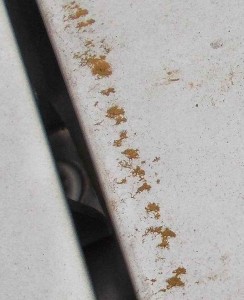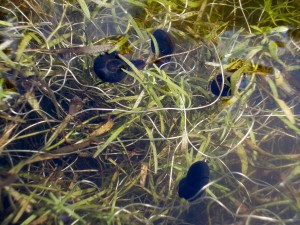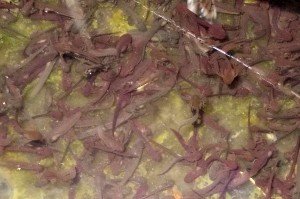Down at the reserve, it was time to strim the meadow, which meant a frog hunt. A conservation frog hunt, to dislodge any frogs that might otherwise get permanently strimmed. I walked up and down, sweeping through the cow parsley – it’s a major reason why cutting is now necessary, it needs to be held back to allow more delicate flowers like garlic mustard through – but no frogs hopped out. I looked under the mats placed there for amphibia – there were no frogs, just three small toads sheltering in the cool darkness.
On the woodland edge of the meadow, brambles have been spreading in their looping way, bending down to the ground, striking root and springing off another few feet into the grass. I pulled up some dozens of them, cutting roots where necessary to leave nothing that could regrow. Some people just quickly clip them off above the ground, which slows them down for a little while: pulling, digging or root-clipping is far more effective.
Down at the pond, the heron was waiting silently, watching for frogs to eat. Since it has arrived, frogs have been much harder to find. I wonder how many of the dozen large frogs I saw mating a few weeks ago have finished up in that enormous dagger-shaped beak.



